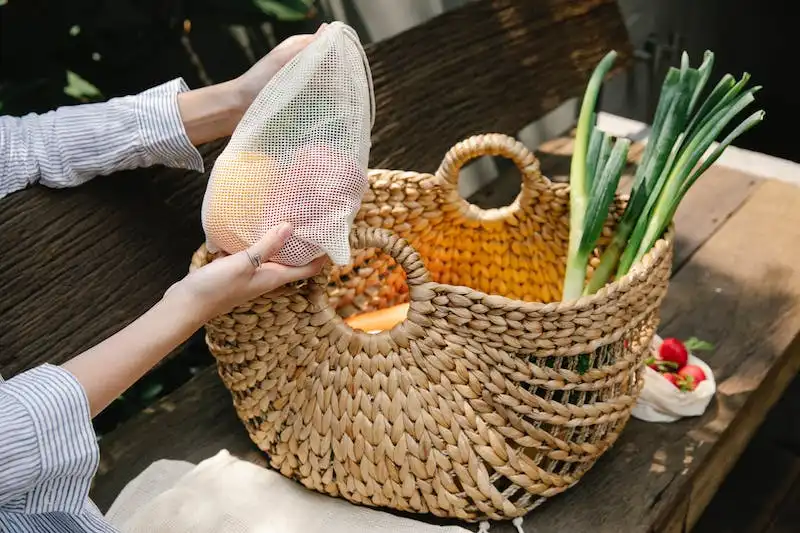Pruning shears are an essential tool for any gardener. Whether you’re cutting back plants in the spring or shaping trees in the winter, having sharp pruning shears makes the job much easier. Over time, however, these tools can become dull and rusty, making it difficult to make clean cuts. In this article, we’ll show you a simple and satisfying method for cleaning and sharpening your pruning shears, so they’re always ready to go.
Before we get started, it’s important to note that sharpening pruning shears is a slight different process than sharpening knives or other multipurpose tools. Pruning shears have a flat cutting edge, whereas knives often have a beveled edge. This means that the sharpening technique we’ll be using is specific to pruning shears.
The first step in sharpening your pruning shears is to remove any rust that may have accumulated on the blades. Rust can quickly dull the blades and make them less effective at cutting through branches. To remove rust, fill a bucket with warm water and a small amount of mild dish soap. Soak the shears in the solution for about 10 minutes, then use a wire brush or steel wool to scrub away any rust.
Once the rust has been removed, it’s time to sharpen the blades. There are a few different methods you can use to sharpen pruning shears, but one of the easiest is to use a sharpening stone. Simply apply a small amount of honing oil to the sharpening stone and hold the shears at a 20-degree angle. Slowly move the shears back and forth across the stone, applying gentle pressure. After a few passes, flip the shears over and repeat on the other side. This will ensure that both blades are sharpened evenly.
After sharpening your pruning shears, it’s important to clean them to remove any metal filings that may have accumulated. Use a clean cloth or paper towel to wipe down the blades and remove any debris. This will help keep your shears in good condition and prevent them from rusting. To further protect the blades, you can apply a light coating of oil to prevent rust.
In conclusion, keeping your pruning shears sharp is an important task for any gardener. With just a little bit of effort, you can easily clean and sharpen your shears, making them more effective and prolonging their lifespan. Regularly sharpened shears will make pruning a breeze and ensure that your plants stay healthy and well-maintained.
Mr Fix It – Secateurs
If you’re a gardener, you know how important it is to have the right tools for the job. One tool that every gardener should have in their arsenal is a pair of secateurs, also known as pruning shears. These handy tools are perfect for trimming and shaping plants, as well as for grafting and taking cuttings.
Over time, your secateurs can become dirty and sticky from sap and other plant residue. This can make them difficult to work with and can even damage the blades. To keep your secateurs in tip-top shape, it’s important to clean and sharpen them regularly.
Cleaning your secateurs is an easy process that usually involves removing any plant debris and rinsing the blades with water. If your secateurs are particularly dirty or have rust spots, you can soak them in a solution of vinegar and water or scrub them with a mixture of baking soda and water. Be sure to dry them thoroughly after cleaning to prevent rust.
Sharpening your secateurs is a bit more involved, but it’s a task that any gardener can tackle with a little practice. First, you’ll need a sharpening tool, such as a sharpening stone or a file. It’s important to choose a tool that is appropriate for the type of blades your secateurs have, as different blades require different sharpening techniques.
To sharpen your secateurs, start by disassembling them if possible. This will make it easier to access the blades. Using your sharpening tool, carefully grind or file down any dull or damaged sections of the blades. Be sure to apply even pressure and work in a smooth motion to avoid damaging the blades.
Once your secateurs are sharpened, it’s a good idea to lubricate them to keep them working smoothly. You can use a general-purpose lubricant like WD-40 or a specialized tool lubricant. Simply apply a little lubricant to the blades and any moving parts, and wipe away any excess with a clean cloth.
With your secateurs in top condition, you’ll be ready to tackle any pruning or trimming job that comes your way. Just remember to clean and sharpen them regularly to keep them in the best possible shape. And if you’re ever in doubt, don’t hesitate to reach out to a professional gardening service for advice or assistance.
So, whether you’re a seasoned gardener or just starting out, having a pair of well-maintained and sharp secateurs is essential. They’ll make your work in the garden much easier and ensure that your plants stay healthy and happy. So don’t let your secateurs become rusty or dull – give them the care they need to keep your garden thriving.
Sign up for the Mr Fix It gardening newsletter to get more tips and tricks delivered straight to your inbox. And don’t forget to flip those secateurs over and get to work sharpening them today!
Source: How to Easily Clean and Sharpen Your Pruning Shears
SERIES 32
Episode 09
Pruning shears are an essential tool for every gardener. They help us keep our plants healthy and maintain their shape. However, using dirty or dull pruning shears can damage our plants and make the job much more difficult. In this episode, we will learn how to easily clean and sharpen our pruning shears to ensure they stay in top condition.
Step 1: Clean the shears
The first step in maintaining our pruning shears is to clean them. After a rainy day or after working with sticky plants, it’s important to remove any dirt, sap, or residue that may have accumulated on the blades. Use a pair of kitchen scissors or a knife to scrape off any stubborn debris. Make sure to clean both the blades and the handles to ensure thorough cleaning.
Step 2: Remove any rust
If our pruning shears have any rust on them, it’s essential to remove it before sharpening. Rust can damage the blades and make the sharpening process less effective. Use a white vinegar and baking soda solution to soak the rusty parts of the shears. After soaking, scrub the rust away using a wire brush or steel wool. Rinse the shears thoroughly and dry them completely.
Step 3: Sharpen the shears
Now that our shears are clean and rust-free, it’s time to sharpen them. There are several types of sharpening tools available, but the most commonly used is a sharpening stone or a file. Hold the sharpening tool at a 20-degree angle and run it along the blade’s edge, moving from the base to the tip. Repeat this process several times on each side of the blade until it feels sharp.
Step 4: Apply lubricant
After sharpening, it’s important to lubricate the shears to prevent rust and ensure smooth operation. Apply a few drops of oil or a silicone-based lubricant to the pivot point and other moving parts of the shears. Wipe off any excess lubricant with a clean cloth.
Step 5: Test the shears
Finally, test the shears to ensure they have been properly sharpened and lubricated. Make a few cuts on a newspaper or a piece of thin paper. If the shears cut cleanly and easily without tearing the paper, then they are ready to be used for pruning. If not, repeat the sharpening and lubricating steps until they pass the test.
By following these five easy steps, we can keep our pruning shears in the best condition possible. Remember to regularly clean, sharpen, and lubricate your shears to ensure they always do the job properly. Happy pruning!
How to Easily Clean and Sharpen Your Pruning Shears
If you want to keep your pruning shears in better condition and ensure they are always working efficiently, it’s important to regularly clean and sharpen them. This will not only simplify your pruning jobs, but also prolong the life of your tools.
Here are some steps you can take to easily clean and sharpen your pruning shears:
1. Clean the shears: Start by wiping off any dirt or debris from the blades using a damp cloth or paper towel. You can also use a mild soap solution if they’re particularly sticky.
2. Disassemble if necessary: If your pruning shears are designed to be taken apart, such as bypass or anvil shears, you can disassemble them to clean the individual parts more thoroughly. Just make sure you know how to put them back together correctly.
3. Sharpen the blades: Using a sharpening stone, file, or honing tool, carefully sharpen the cutting edges of the blades. Make sure to follow the original bevel of the blades and maintain a consistent angle. If you’re unsure, it’s always a good idea to ask a professional for guidance.
4. Oil the shears: Apply a light coat of oil to the blades and pivot points of your pruning shears to prevent rust and keep them moving smoothly. You can use a multipurpose oil or any oil recommended by the manufacturer.
5. Reassemble and test: If you disassembled your pruning shears, make sure to put them back together correctly. Once reassembled, test the shears to ensure they’re working properly before using them on your plants.
By following these steps, you can easily clean and sharpen your pruning shears, keeping them in top condition for all your pruning and gardening needs. Remember, a sharp and well-maintained pair of shears will make your pruning jobs easier and help your plants stay healthy.
Advertisement
Are you in need of professional pruning services for your business? Mr. Pruning can help! We have the experience and supplies necessary to take care of all your pruning and trimming needs. Contact us today for a free quote!




